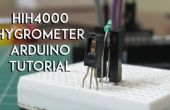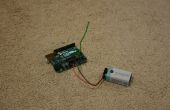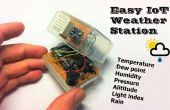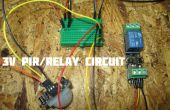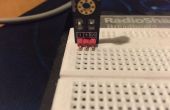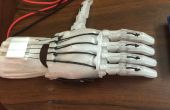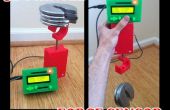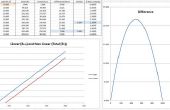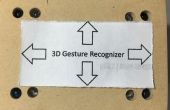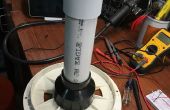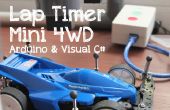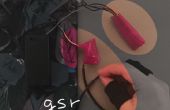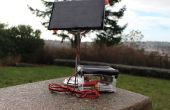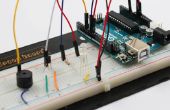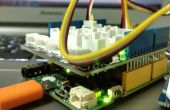Paso 4: código
El siguiente código se utiliza para controlar el motor basado en el diseño del circuito RC. La Biblioteca de CapacitiveSensor se utiliza para simplificar el proceso de detección. Usted puede encontrar y descargar esta biblioteca aquí. Los comentarios en el código que iluminarán propósito del código.
#include CapacitiveSensor cs_4_6 = CapacitiveSensor(4,6); // 10M resistor between pins 4 & 6. Pin 4 is the signal pin and pin 6 is the sensor pin.#define pin1 12//these are the Arduino pins that we use to activate coils 1-4 of the stepper motor #define pin2 13 #define pin3 10 #define pin4 11 #define delaytime x //delay time in ms to control the stepper motor delaytime.int x = 8;//8 is about the fastest that can yield reliable operation without missing steps void Step_A(){ digitalWrite(pin1, HIGH);//turn on coil 1 digitalWrite(pin2, LOW); digitalWrite(pin3, LOW); digitalWrite(pin4, LOW); } void Step_B(){ digitalWrite(pin1, LOW); digitalWrite(pin2, HIGH);//turn on coil 2 digitalWrite(pin3, LOW); digitalWrite(pin4, LOW); } void Step_C(){ digitalWrite(pin1, LOW); digitalWrite(pin2, LOW); digitalWrite(pin3, HIGH); //turn on coil 3 digitalWrite(pin4, LOW); } void Step_D(){ digitalWrite(pin1, LOW); digitalWrite(pin2, LOW); digitalWrite(pin3, LOW); digitalWrite(pin4, HIGH); //turn on coil 4 } void step_OFF(){ digitalWrite(pin1, LOW); //power all coils down digitalWrite(pin2, LOW); digitalWrite(pin3, LOW); digitalWrite(pin4, LOW); }//these functions run the above configurations in forward and reverse order //the direction of a stepper motor depends on the order in which the coils are turned on. void forward(){//one tooth forward step_OFF(); long total2 = cs_4_6.capacitiveSensor(30); Serial.print(total2); // serial print sensor output 2. This is necessary to ensure the signal is being updated initially. Serial.print("\n"); delay(delaytime); Step_A(); delay(delaytime); Step_B(); delay(delaytime); Step_C(); delay(delaytime); Step_D(); delay(delaytime);}void backward(){//one tooth backward step_OFF(); long total2 = cs_4_6.capacitiveSensor(30); Serial.print(total2); // serial print sensor output 2. This is necessary to ensure the signal is being updated initially. Serial.print("\n"); delay(delaytime); Step_D(); delay(delaytime); Step_C(); delay(delaytime); Step_B(); delay(delaytime); Step_A(); delay(delaytime); }/***************************setup function****************************************************/void setup() { Serial.begin(9600);//start serial communication pinMode(pin1, OUTPUT); // initiate motor pins pinMode(pin2, OUTPUT); pinMode(pin3, OUTPUT); pinMode(pin4, OUTPUT);}/***************************main loop*********************************************************/void loop() { delaytime = x; int numberOfSteps = 30; long total2 = cs_4_6.capacitiveSensor(30); Serial.print(total2); // print sensor output 2 Serial.print("\n"); if (total2 > 2000){ //Capacitive Sensing Conditional. NOTE: THESE THRESHOLD VALUES VARY WITH FOIL SIZE, RESISTOR SIZE AND OTHER VARIABLES. Be sure to test out these values prior to project construction. while(numberOfSteps>0) //After increasing by a certain threshold between two measuring periods, initiate stepper motor backward { backward(); //going backward numberOfSteps --;}} if (total2 < 500 && total2 > 150){ //If decreasing past a threshold, initiate stepper motor forward while(numberOfSteps>0) { forward(); //going forward numberOfSteps --;}} if (total2 < 150){ // This condition is made to ensure noise is kept our of the equation. step_OFF(); } delay(50); }
